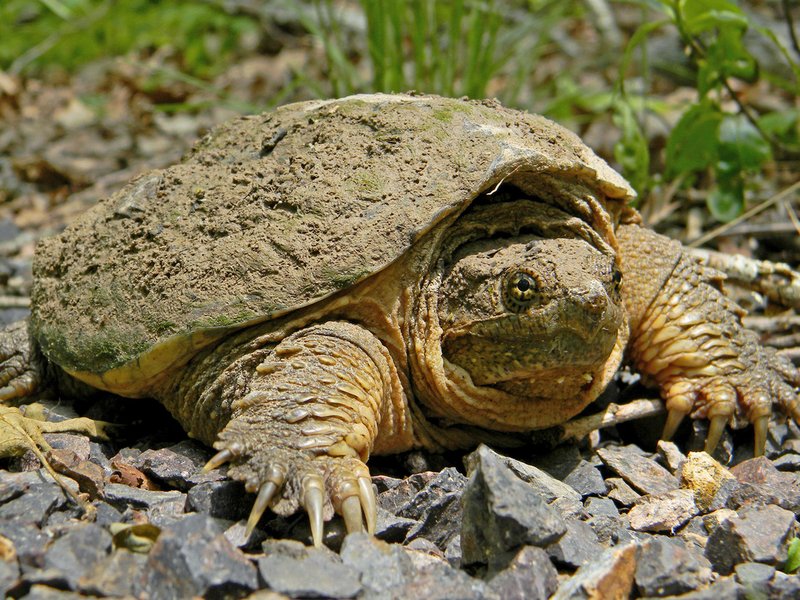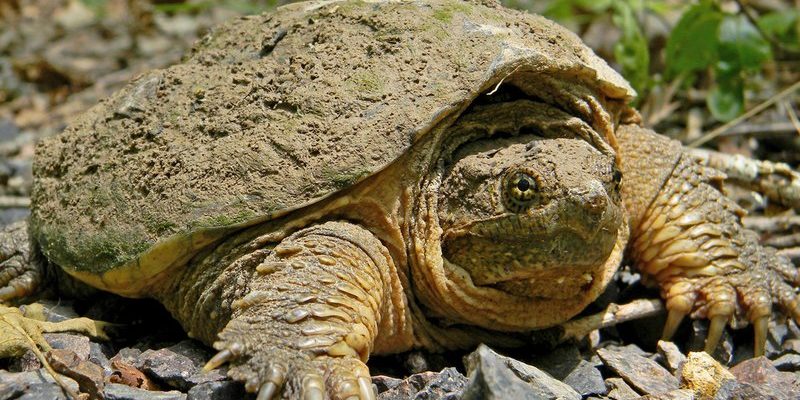
Imagine for a moment that you’re flipping through a history book that’s been written over eons. Each page tells a story of survival, adaptation, and resilience. That’s exactly what the history of snapping turtles offers us. From their emergence during the age of dinosaurs to their current status as a key part of our ecosystems, they’re a testament to nature’s ability to endure and evolve. Let’s dive into this watery world and explore the evolutionary tale of these intriguing reptiles.
The Origins of Snapping Turtles
Snapping turtles belong to a family called Chelydridae, which has a rich history. They first appeared around about 200 million years ago, during the late Triassic period. This was a time when dinosaurs roamed the Earth, and the environment was vastly different from today. Picture lush, sprawling landscapes filled with strange plants and animals. Snapping turtles adapted to this world, developing strong shells and powerful jaws to help them thrive in both aquatic and terrestrial habitats.
The most recognized species, the common snapping turtle (*Chelydra serpentina*), made its debut around 60 million years ago. These turtles evolved to become opportunistic predators, feeding on anything from fish and insects to plants. This versatility in diet has played a crucial role in their survival and evolutionary success. Over time, they became deeply embedded in their environments, with notable adaptations that set them apart from other turtle species.
You might be wondering why these creatures didn’t go extinct along with the dinosaurs. Well, here’s the thing: snapping turtles have a remarkable adaptability. Their tough, armored shells and ability to live in various habitats, from freshwater lakes to rivers, allowed them to thrive even as the world changed around them. This adaptability is a huge part of their evolutionary story.
Physical Characteristics Over Time
As snapping turtles evolved, certain physical characteristics became crucial for their survival. Their shells—or carapaces—are not just for protection. They’ve evolved to be quite flat, allowing these turtles to hide easily in muddy riverbeds. When predators come near, they can easily camouflage themselves, making them look like a rock rather than a meal.
Another standout feature is their powerful jaws. Snapping turtles are known for having one of the strongest bites in the animal kingdom. This adaptation is a result of their need to catch slippery fish and other fast-moving prey. Their jaws work like a trap, snapping shut with incredible speed and strength. It’s like having nature’s version of a set of heavy-duty pliers in their mouths!
The evolution of their limbs is equally fascinating. Snapping turtles have evolved strong, webbed feet that make them excellent swimmers. But they also have well-developed claws that help them dig and move on land. This dual capability allows them to not only thrive in water but also to navigate the terrestrial world when needed.
Behavioral Adaptations
Behaviorally, snapping turtles have also adapted in ways that benefit their survival. One of their most notable behaviors is their ambush hunting technique. Rather than chasing down prey, they often wait silently in the water, camouflaged and still. When a fish or another unsuspecting creature swims close enough, they strike with lightning speed. It’s almost like a game of patience, and snapping turtles are experts at it.
Snapping turtles are also opportunistic feeders, meaning they’ll eat whatever is available. This can range from fish and frogs to vegetation and even carrion. This broad diet has helped them survive in various environments and adapt to changing conditions over time. It’s a bit like being a flexible eater at a buffet—you never know what you might find!
Another interesting fact is their seasonal behavior. During summer, snapping turtles are most active, often seen basking in the sun. In contrast, during colder months, they become more dormant, burrowing into the mud at the bottom of water bodies. This ability to adapt their activity levels based on temperature showcases their resilience and practicality.
Conservation Status and Modern Challenges
Sadly, the evolutionary journey of snapping turtles isn’t without its challenges. Today, habitat loss, pollution, and climate change are significant threats to their survival. As rivers are dammed and natural habitats are altered, these ancient creatures find it harder to thrive. Their slow reproductive rate (laying only a few eggs each year) makes population recovery difficult.
In many regions, snapping turtles are also targeted for their meat, which poses another threat. Conservation efforts are underway to protect their habitats and ensure they have safe environments to live and reproduce. It’s crucial to balance human activities with the preservation of these remarkable species.
You might be wondering how you can help. Supporting local conservation initiatives, participating in clean-up efforts, or even simply spreading awareness can all make a difference. Every little action helps in preserving these living relics for future generations.
The Role of Snapping Turtles in Their Ecosystems
Snapping turtles play an important role in their ecosystems. As predators, they help maintain balance in aquatic environments by controlling populations of fish and other creatures. This, in turn, supports the health of their habitats. By feeding on dead or decaying organic matter, they also contribute to nutrient cycles in their ecosystems.
Their presence is often an indicator of ecosystem health. A thriving population of snapping turtles suggests that the habitat is sustainable and supports a diverse range of life. So, when you see one of these turtles basking in the sun, it’s not just a beautiful sight—it’s a sign that the ecosystem is functioning as it should.
Interestingly, their diets also include organic matter and vegetation, which helps in the decomposition process. This interaction makes them a part of the intricate web of life in their habitats. They’re not just solitary creatures; they’re integral to the bigger picture of biodiversity.
Snapping Turtles in Culture and Mythology
Throughout history, snapping turtles have captured human imagination. Many cultures have myths and stories surrounding these turtles. For instance, in some Native American traditions, the snapping turtle is seen as a symbol of strength and endurance. Its ability to live for decades adds to its mythic status.
In modern times, they are often featured in movies and cartoons, sometimes portraying them as wise, old creatures. This cultural representation highlights our fascination with these ancient reptiles. It serves as a reminder that snapping turtles are more than just animals; they are a part of our shared heritage and natural history.
So, whether you encounter them in a documentary or at your local pond, snapping turtles remind us of the rich tapestry of life and the evolution of our planet. They hold stories of resilience and adaptability that go back millions of years.
The evolutionary history of snapping turtles is a remarkable saga that spans millions of years. From their ancient beginnings alongside dinosaurs to the crucial roles they play in modern ecosystems, these turtles have shown incredible adaptability and resilience.
As we learn more about them, it’s essential to remember the challenges they face today. With habitat destruction and climate change threatening their survival, our role in safeguarding their future becomes even more critical. By supporting conservation initiatives and understanding their importance, we can help ensure that these magnificent creatures continue to thrive.
The next time you catch a glimpse of a snapping turtle, take a moment to appreciate the millions of years of evolution and survival they embody. They are more than just turtles; they’re living links to our planet’s past and a testament to the power of nature. Let’s work together to protect them for generations to come.

